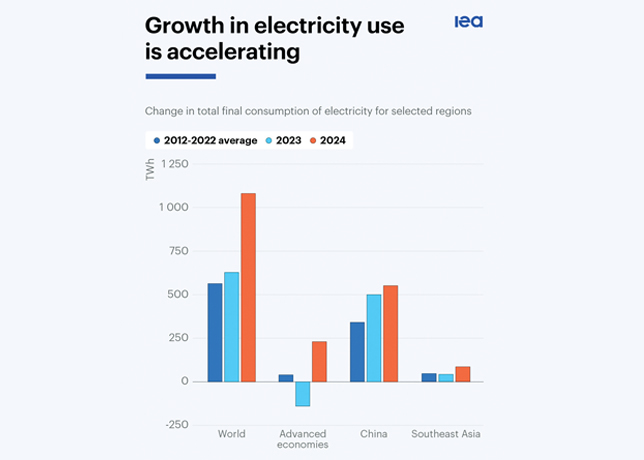
 Scaling up voluntary carbon markets
Scaling up voluntary carbon markets
Current carbon prices are too low to drive sufficient progress, and at the same time less than 4 per cent of global emissions are covered by a carbon price in the range needed by the Paris Agreement
The latest IPCC report on vulnerability and adaptation underscores the urgency of immediate and more ambitious action to address climate risks.
Carbon pricing can play a critical role in addressing the risks. In other words, by accelerating the implementation of technologies and measures that, in combination, can drastically reduce greenhouse gas emissions and minimise the impacts of climate change, especially on the most vulnerable populations and those with the least resources to adapt.
Several nations and jurisdictions have begun to implement carbon pricing. It is effective and lowering emissions, but in order to achieve the 2 deg C target, it needs to be more effective, to reach more countries.
Carbon pricing is a key tool to facilitate a transformative shift towards a net-zero future. But currently less than 4 per cent of global emissions are covered by a carbon price within the range needed by 2030 to meet the Paris Agreement temperature goals.
NET-ZERO GOALS & CARBON PRICING
The task force on net-zero goals and carbon pricing report contributes to a deeper, common understanding of what net-zero means, how it can be achieved, and the role carbon pricing mechanisms can play in achieving it. It outlines some key findings:
• Net-zero involves first cutting emissions to a minimum, then seeking (permanent) removals.
• The world is not on track to achieve net-zero by 2050. Current carbon prices are too low to drive sufficient progress: Less than 4 per cent of global GHG emissions are covered by a carbon price in the range needed to meet the 2 deg C goal of the Paris Agreement. The scale and urgency of emission reductions needed by both countries and the private sector.
•Carbon pricing, including international cooperation through carbon markets, should be included in the arsenal of measures to ena-ble the achievement to net-zero targets.
Carbon prices should be high enough to provide effective signals to society, and to drive levels of investment and technological change necessary to reach net-zero. They should act in conjunction with complementary policy actions to make carbon pricing rele-vant across company value chains.
•International carbon markets must increase ambition and leverage investment, rather than being used solely to reduce costs.
•As countries work towards net-zero and emissions are aggressively abated, the use of emission reduction credits must necessarily decrease.
Only high-quality removal credits should be used to balance residual emissions at net-zero and beyond. However, high quality emission reduction credits can provide an important flow of capital to accelerate action on the path to net-zero and progress towards emission reductions now.
•Corporate achievement of net-zero occurs when value chain emissions have been abated to the maximum extent possible and the remaining residual emissions neutralised by an equivalent quantity of removals.
•Net-zero criteria should be integrated into all investment decisions, including those by development finance institutions, to support rapid decarbonisation across all economic sectors, taking into account the national circumstance of individual countries.
•Whether implemented by countries or by the private sector, net-zero strategies should support socially fair and just transitions across all regions to be successful.
Governments and companies should respect human rights and make sure that net-zero strategies align with development objec-tives, promote jobs, and ensure a fair distribution of costs and benefits, particularly with regard to vulnerable and indigenous popula-tions.
•The credibility of ambition and stakeholder engagement in net-zero development and implementation processes depend on trans-parent net-zero targets. Moreover, it will foster sectoral mainstreaming and identify opportunities for gains from alignment and col-laboration needed to achieve truly systemic change at the pace and scale required.
•Transparency in efforts and separate targets for emission reductions and removals along the trajectory to net-zero at all levels, ra-ther than solely net emission targets, would promote accountability and may help prioritise emission abatement.
•To be credible and to gain and maintain public acceptance, all carbon market instruments need to operate within a clear trajectory to net-zero and apply robust accounting rules to ensure the avoidance of double counting. Companies must robustly account for credits and mitigation contributions and, where possible, track and disclose where credits are sourced.
•If a company uses international credits for compliance purposes, it must ensure that the reductions or removals are not double counted. Companies should not use international credits without a corresponding adjustment in the host country if that credit is ac-counted toward the NDC of another country.
•All countries, sectors, and companies need to participate in the “race to zero”, but not all countries will achieve net-zero at the same time. Due to their capabilities and historic emission levels, advanced countries, in particular, must reach net-zero as quickly as pos-sible. Developing and emerging countries may need to take a slower pace due to institutional or capacity limitations or development needs. Still, they should also strive to achieve net-zero as quickly as possible.
IMPLEMENTATION OF ARTICLE 6
After six years of negotiations, COP26 in Glasgow finalised the long-awaited Article 6 of the Paris Agreement rulebook for interna-tional cooperation through carbon markets.
And at this year’s COP27 in Egypt, Nishimura Akihiro, Minister of the Environment, Japan declared the launch of the ‘Paris Agree-ment Article 6 Implementation Partnership’ towards the development of high integrity carbon markets.
The implementation of Article 6 is expected to revitalise decarbonisation markets and private investment, and to contribute to glob-al greenhouse gas (GHG) emission reductions and economic growth at the same time.
Putting a price on carbon pollution is widely recognised as the most cost effective policy to cut emissions. And if there were any doubt about this, Canada is the proof.
Canada has had carbon pricing in place in every jurisdiction since 2019. Since then, we’ve seen first-hand how this policy has helped cut emissions while putting money back in people’s pockets and spurring innovation.
GCC MAKES FIRM STRIDES TOWARDS ENTERING CARBON MARKETS
Gulf States, whose economies have historically been highly reliant on fossil fuels, have signaled their interest in transitioning to net-zero carbon.
In October 2021, the UAE became the first country to announce its commitment to achieve net-zero by 2050. This was soon fol-lowed by Saudi Arabia, Oman, and Bahrain. Qatar aims to reduce greenhouse gas emissions by 25 per cent by 2030, and Iraq has committed to emissions reductions of between 1 and 2 per cent.
These commitments are paired with a growing interest in entering global carbon markets as a way to offset the predicted reduction in income due to fossil fuel exports from the region.
To this end, Saudi Arabia’s Public Investment Fund and the Saudi Tadawul Group, which owns the Saudi Exchange, has launched the Riyadh Voluntary Exchange Platform for the trade of verified, approved, and high-quality carbon offsets and credits produced in the MENA region.
The finalisation of Article 6 in Glasgow formally opened the door for carbon markets to be rolled out more broadly.
The Middle East and North Africa region is now well positioned to use market measures to deploy new and emerging technologies to manage emissions while still consuming fossil fuels in the foreseeable future.
Some experts note that there is a multibillion-dollar untapped market opportunity in the region to really benefit from carbon pricing policies and measures, which can be partially delivered by carbon capture storage and utilisation, renewable energy, and low car-bon hydrogen mega projects deployed in the region.
In conclusion, carbon pricing is the most efficient tool to accelerate the transition toward to a low-carbon society. And a broader coverage of carbon pricing systems should stimulate the global transition.







































































